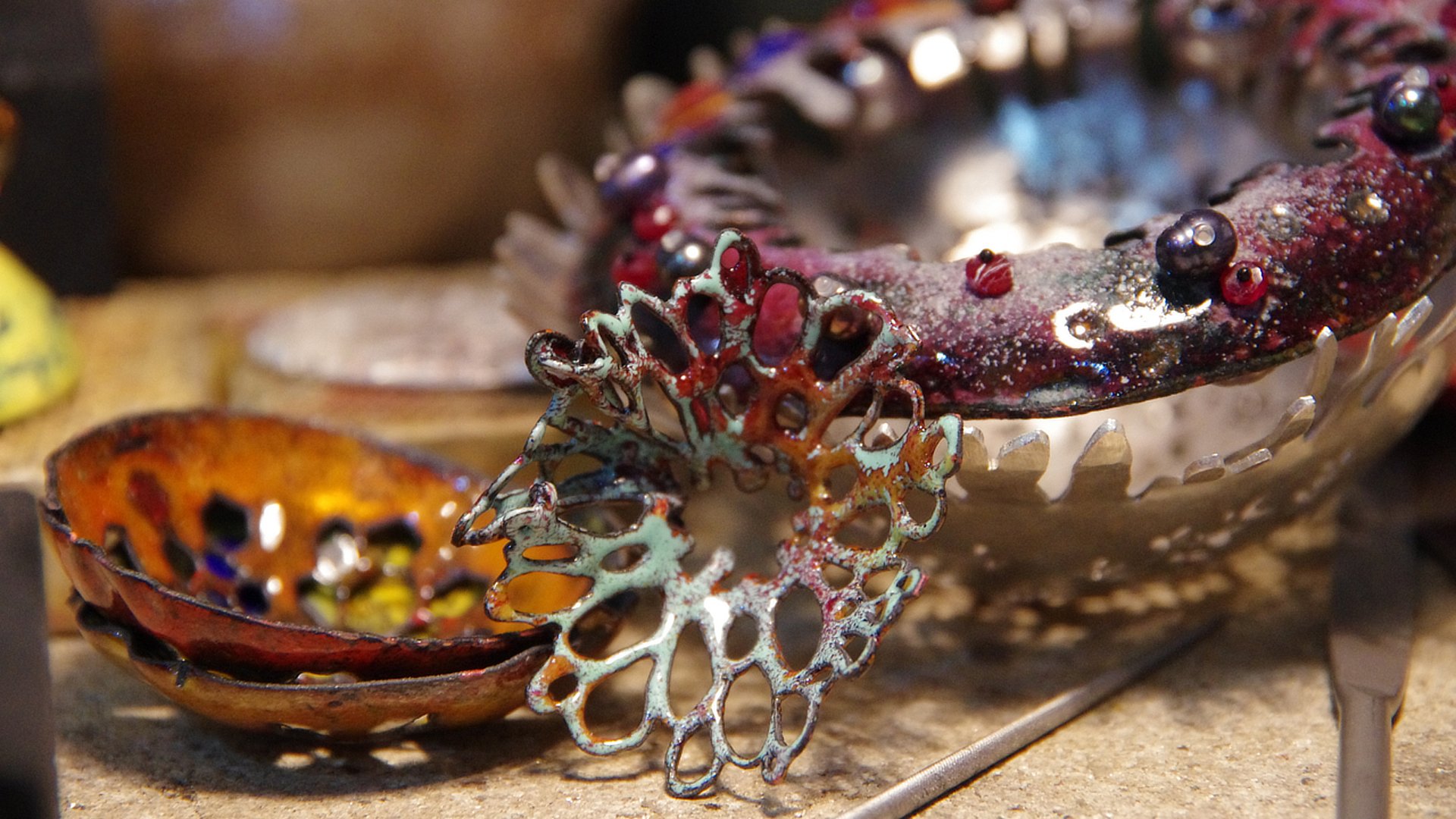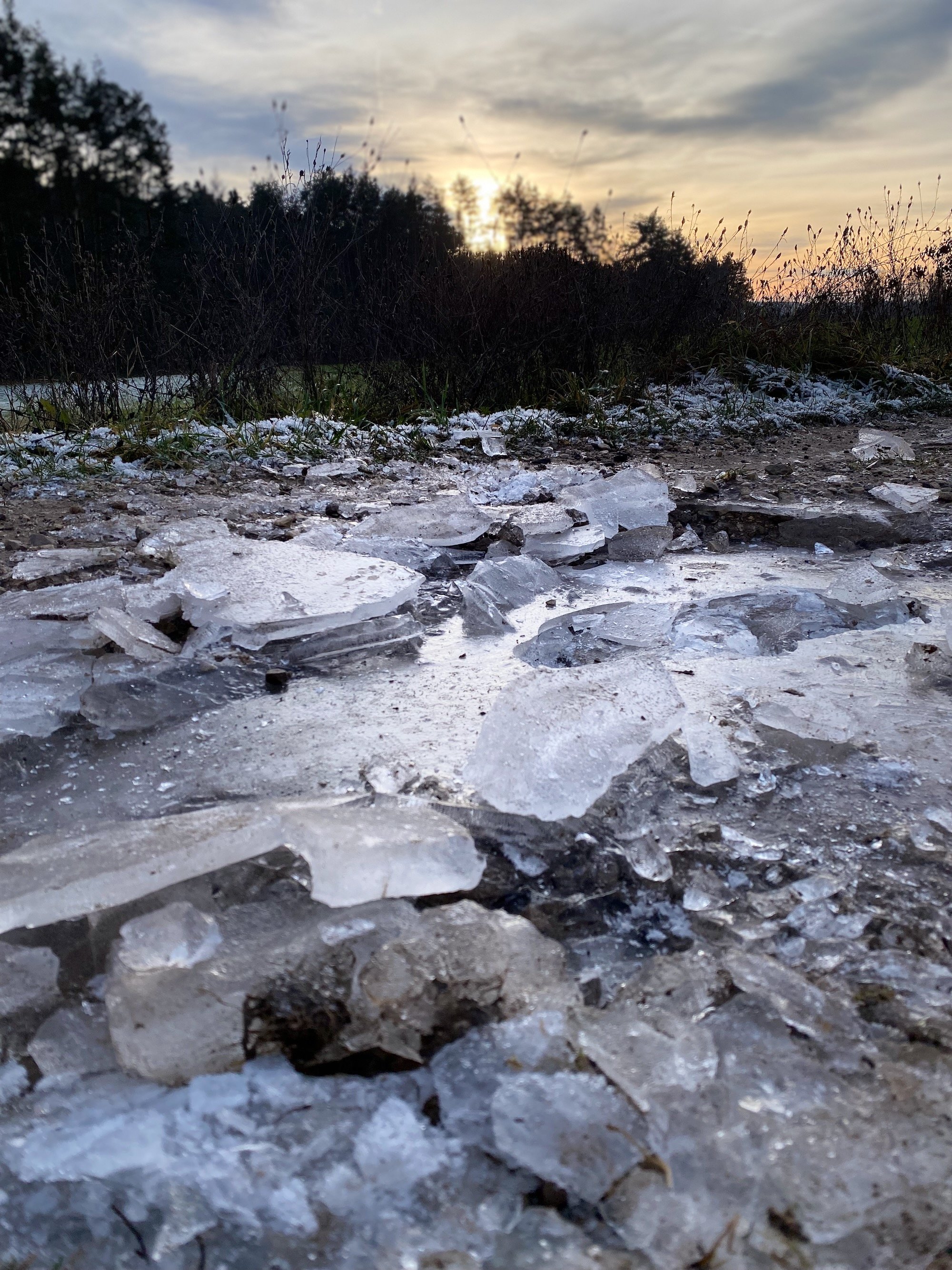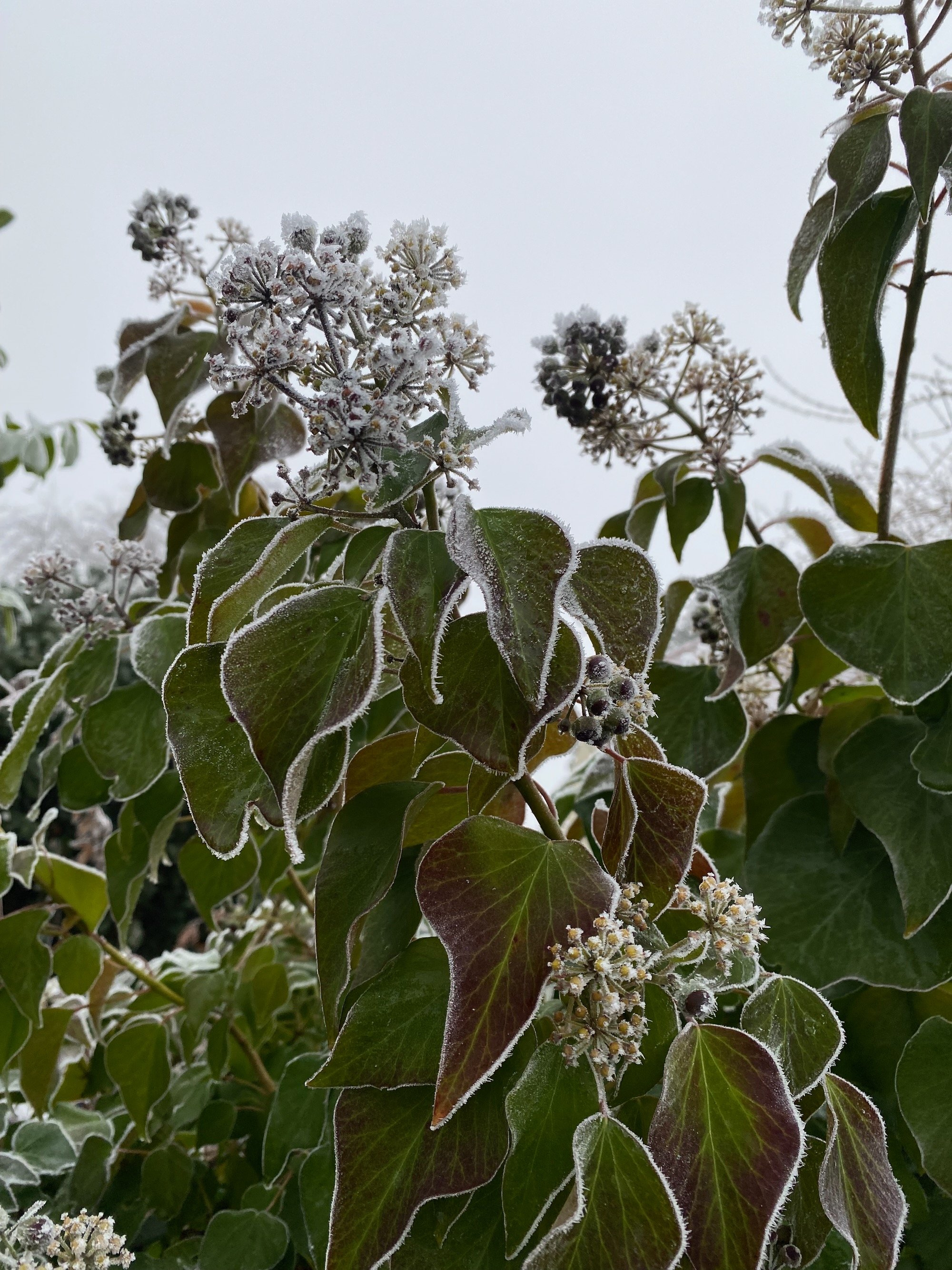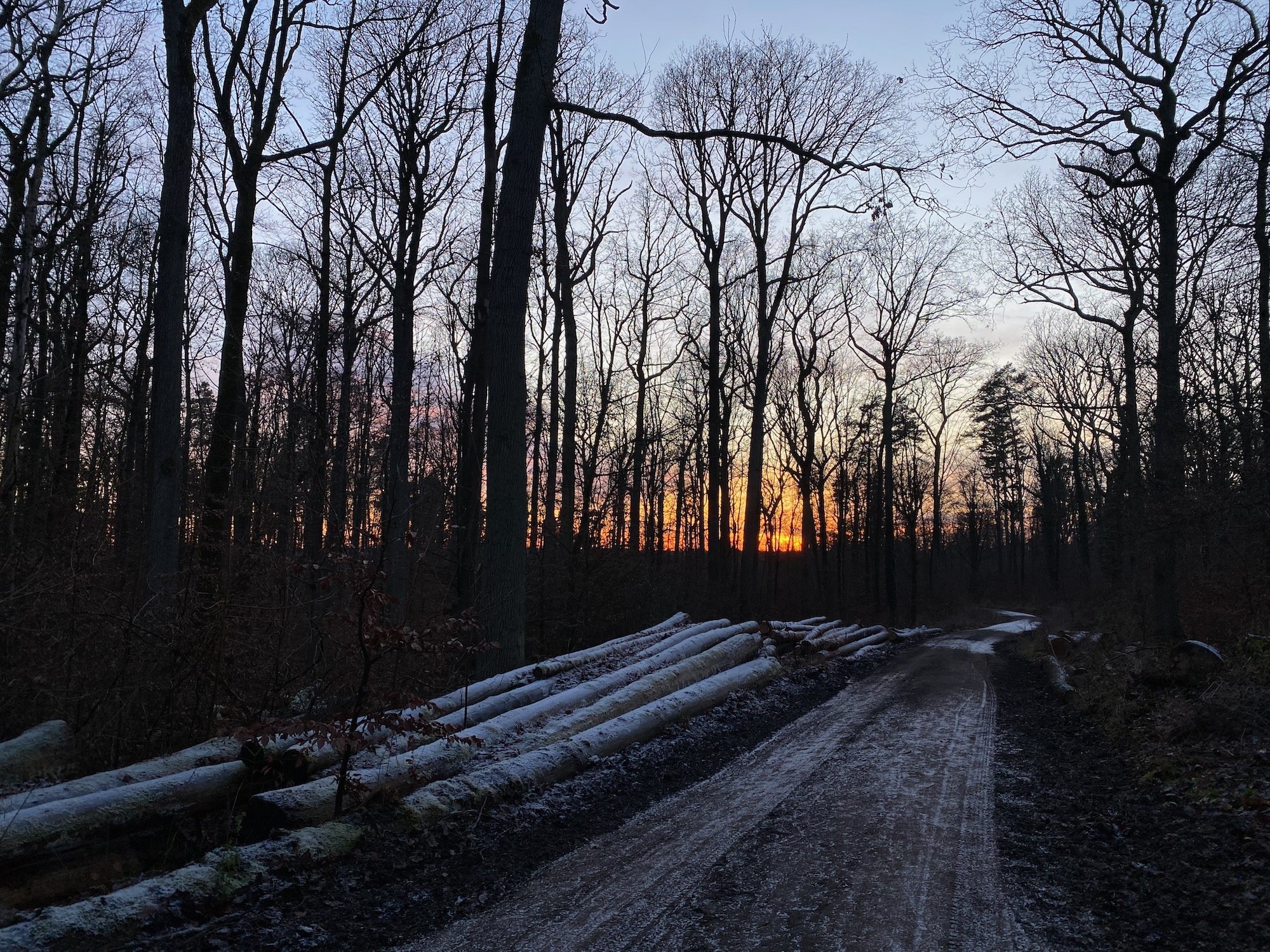
blog
Welcome to my blog. This is a place where I think out loud, show you what I’m up to in the studio, share impressions of inspiring events or everyday moments that moved me. Some entries are carefully curated essays, others are just a few thoughts, sometimes written in English and sometimes in German.
Featured posts

newest blog entries:
Winter
It’s winter. I cherish this white and noiseless time between the bustle of our Christmas season and the start of the new year. Since moving to Europe, it’s taken me a few years to learn to fully appreciate winter. Now, I know it’s one of the reasons I wanted to move here in the first place: I needed a real winter, I needed its pause and reflection, its going-underground, its gathering-of-forces, its quiet stripping away of the unnecessairy, its gestation for new creativity to emerge.
WINTER.
I needed a real Northern hemisphere winter, I needed its pause and reflection, its going-underground, its gathering-of-forces, its quiet stripping away of the unnecessairy, its gestation for new creativity to emerge.
Written in English.
It’s winter. I cherish this white and noiseless time between the bustle of our Christmas season and the start of the new year. Since moving to Europe, it’s taken me a few years to learn to fully appreciate winter. Now, I know it’s one of the reasons I wanted to move here in the first place: I needed a real winter, I needed its pause and reflection, its going-underground, its gathering-of-forces, its quiet stripping away of the unnecessairy, its gestation for new creativity to emerge.
My ancestors are mostly German, Hungarian and Swedish. They were Northerners at home in vast forests with hostile winters. While living in South Africa was all I knew as a child, the world did feel upside-down somehow, with Christmas at the height of summer. Coming to Europe felt like returning to a native land, I felt beckoned by the forest, embraced by the local botanicals in hedgerows and meadows. It’s here that my internal rhythm can truly sync up with Nature and allow me to follow her cycles as she inhales and exhales in great breaths of life and death.
Here are glimpses of this past week’s winter walks, as the old year has crawled into hibernation. Underneath the frozen earth, I can almost feel the roots and shoots secretly strengthening.
An Attempt at the Autumnal Garden
The spectacle of autumn is overwhelming in its urgency and intensity, pushing me to sculpt words around experiences - although I know how every attempt to render that deep, tearing honey-sweet pain of autumn into text will always feel insufficient.
An Attempt at the Autumnal Garden
Musings and meanderings concerning autumn.
Written in English.
Snapshot of a shrivelled rose along my path.
The spectacle of autumn is overwhelming in its urgency and intensity, pushing me to sculpt words around experiences - although I know how every attempt to render that deep, tearing honey-sweet pain of autumn into text will always feel insufficient.
For a while, I have felt mute; busy, perhaps too overwhelmed with all the bits and pieces of my everyday life to really manage deep-thinking-writing time. But now, with the beauty and brevity of these golden weeks so palpable, I feel I have no choice but to carve out a few hours to think on paper.
My work centres around in the inner Garden (which I think of in capital letters), embedded in humanity’s collective being, and around all the metaphors attached to this image, such as the idea of paradise. Autumn means death in the Garden. And it is a conscious, flamboyant kind of death.
Every year, I’m swept off my feet by the emotional force of it all, the luminosity of the colours, the shrivelling rose hips and un-picked blackberries, the darkening edges around leaves, the slow creeping of yellows into greens, and oranges into yellows, the evening cold, the sunset pinks, the slanted light, the confused crocus I discovered on a walk, the wild apples and walnuts crowding the riverbank.
It’s harvesting time. Time to collect, time to roam the fields, to follow those small winding paths along the river to look, look, look at the world, observe nature with your entire being; time to absorb the colours and store them deep in your soul for later.
It is also a time for a strange kind of pain, a time for a conscious contemplation of death. Every exquisite yellow leaf is a slither of lived life, a slice of death; it will be decaying soon, magically broken down into its components by fungi, bacteria and other precious agents of change. But it will also be a leaf-shaped space for something new in this world, next year, in the next cycle. It will be transmuted, made into nutrients for other life forms. It is given freely.
We humans are astonishing creatures. I believe that we have the unique ability to hold paradoxes in our mind, and this balance of seemingly irreconcilable opposites is exactly that place where our humanity flourishes. It’s that moment of inner freedom, where we are detached enough not to succumb to self-pity and emotional enough to feel real empathy, where we hold birth and death, joy and sorrow in one and the same space, with grace and dignity and (self-)love. This is my ambition for these upcoming weeks: practising to hold that difficulty within myself, being a witness, becoming really comfortable with paradoxes.
Here, in this moment of joyful pain, and melancholy gratitude, I think there is a grand lesson to be learned from nature. The search for a good life is closely tangled into the search for a good death. Death looming, invisibly and inevitably, is the most life-affirming impulse there is. It transmits the urgency of living in imperatives: Do! Make! Craft! Love! Fall! Build! Dream! Cry! Bleed! Share! And if I may, when my time comes, face my own death with the graceful surrender of the Autumnal Garden, it would be a good death.
Below are the manifestations of my wanderings and wonderings in the fields and forests around my (still-new) hometown of Bamberg, observing the close-knit fabric of nature, watching the wildflower calendar carousel through the seasons, and the yellowing of the forest, the migration of birds. By collecting, composing and creating, I attempt to channel my emotions into this visual Garden.
Above:
SPATTER: DEEP FOREST, available here. Enamelled statement earrings housed in a watercolour painting. With my overgrown forest landscapes I'm creating a dense, imaginary jungle of shapes and colours and symbols that draw the viewer into its thicket. It's all about the complex garden we carry within ourselves, the ambivalence of our souls - cultivated and wild, dangerous and gentle, a space that is hazardous and safe at times, both present in the now and eternal, both human and divine.
Detail of SPATTER: DEEP FOREST; see the entire art work above.
UNDERGROWTH, an impression of a walk by the river. Watercolour, ink & beeswax painting - available here.
This is harvesting time. Finding patterns, colours.
Still clinging, surrounded by siblings.
BOTANIST’S HALF-DREAM JUST BEFORE DAWN, available here in my online-shop or at the studio in Bamberg.
Statement neckpiece. Carefully kiln-enamelled disks, concave side in a variety of mottled dreamy greens and autumn colours and convex side a deep burgundy red.
Autumn will forever stay the most inspirational season to me. The colours flood me, dominate my mood. I feel as if I'm walking on mottled gold, eating slices of autumn, breathing wild-grapevine-purples and falling asleep into a sea of oranges at night. Colour buoys me up, and seeps out of me into my work.
GREEN LEAFEATERS. Bright statement earrings.
My LeafEater series is inspired by the intricate patterns on leaves left ravaged by hungry insects. As I paid closer attention, I noticed how different plants attract different predators, and how they each have their unique patterns. Like most humans, leaves are comparable, but never ever actually the same. In an attempt to get to know one leaf intimately, I play with these patterns, subtle colours, jagged edges, and lace-like cutouts. Each leaf is hand-sawn and kiln-enamelled.
Above:
SAFFRON POMEGRANATE, available here. Pendant showing off the marvels of enamelling as a contemporary jewellery technique.
These abstracted pomegranates are vibrant fruit stolen from an imagined paradise, a garden of dream-like spaces and lost mythological treasures. Wear them to carry a small token of Persephone, the goddess of springtime, vibrant botanicals and the dark underworld.
HEDERA, statement earrings. Enamel on silver, silver hook, faceted pink garnet drops.
A CONSCIOUS GARDEN, being assembled on my jewellery bench.
Dog roses, mummified memories of last summer.
Thoughts on Disappointment
So I’ve been thinking about disappointment all week. What exactly is this disappointment thing? How can we define it? It’s painful, yes, it has a lot to do with expectations that could not be met, but it’s not anger, it’s not really shame or guilt either. It’s sort of a hollow feeling, a space that would have held something glorious and sparkling and hopeful, and that is now empty.
When your way is blocked, suddenly, and you find yourself in a puddle of broken expectations. Photograph by Nora Kovats. Corridor flanking the courtyard at Hildesheim’s oldest cathedral.
So this year’s international trade fair in Munich, including all its special shows like Handwerk & Design and the SCHMUCK and TALENTE competitions, has been cancelled due to the corona virus threat. I’ve dreamed about showing my work at Handwerk & Design for years.
This year, I had forged my own opportunity to exhibit there by gathering a group of fellow artists from Berlin, envisioning and then organizing a group show that would have been more than just individual artists next to each other: it would have been a curated exhibition integrating eight different unique visual languages. For me, this was an ambitious project, one that has kept me increasingly busy since November, with the past six weeks becoming an organizational marathon. It was so wonderful to see this group of artists come together and give their time freely, discuss the most divergent ideas and reach conclusions and compromises, build tiny scale cardboard models of our display, render the display in 3D, then build the entire thing from scratch, even sawing the wood into pieces ourselves. Then, five days ago, this vision crumpled into sawdust as I received the news that the entire fair had been cancelled.
I wasn’t entire unprepared, of course not, with other trade fairs and large gatherings being cancelled all over Europe. But the disappointment was acute and real and painful, even though, honestly, the entire project might have been a failure even if the fair had not been cancelled.
So I’ve been thinking about disappointment all week. What exactly is this disappointment thing? How can we define it? It’s painful, yes, it has a lot to do with expectations that could not be met, but it’s not anger, it’s not really shame or guilt either. It’s sort of a hollow feeling, a space that would have held something glorious and sparkling and hopeful, and that is now empty. It’s a little paralysing, a melancholy type of inertia. It’s a vacuum that can now be filled - often with a squadron of negative emotions chasing each other into the ditch: frustration, self-flagellation, a crumbling self-esteem, disillusionment, bitterness and resentment.
The best place to observe your disappointment will always be nature. Going for long, aimless walks to fill empty spaces inside with simple grains of gratitude, watching nature grow and die and flower and crumble. Somewhere in Brandenburg. Photograph by Nora Kovats.
I keep asking myself how we ought to deal with disappointment? And what’s the point of it? Typically, I tend to react to disappointment with denial; I justify to myself that the disappointing event wasn’t really that important, I charge on with a new mission, never looking back, in a crazy storm of self-preservation. While that’s a great survival mechanism that has served me well in the past, I am not entirely convinced anymore that it is useful in the long run. I feel this process of extricating yourself from disappointment has a lesson to teach that I haven’t been ready to learn yet. It seems that I should sit with this disappointment for a few days, examine it, experience and articulate what it feels like before the void gets filled either with angry frustration or manufactured hope.
While it can feel like a curse, disappointment is in essence a resilience-building tool. It is a really vital part of our lives. To clarify, by that I don’t mean a tool to cultivate the ability to ignore disappointment, to readjust with superhuman speed and bounce back like a jack-in-the-box. Rather, what I mean is the capability to hold this disappointment, to embrace it, taste it, and then gingerly starting to re-fill the void with those first slithers of gold and dream dust. And bit by bit, you rebuild your vision, you make it better and stronger this time, the walls are more solid, the glue holding everything together is tougher because there’s a foundation cemented by the possibility of failure, and there’s a type of wisdom underneath that is heavier but also more real than your lighter, younger self’s view of life.
Disappointment is the supreme editor of our life plans. It’s a builder of strength and mutual empathy. Those cyclical ups and downs of hope and expectation, shattered by disappointment, and rebuilt again, are a kind of energy generator, an engine keeping us in motion, our feet on the ground and our head in the clouds.
Spaces to Fill. 2019. Watercolour & ink painting on Hahnemühle watercolour paper.

































It’s winter. I cherish this white and noiseless time between the bustle of our Christmas season and the start of the new year. Since moving to Europe, it’s taken me a few years to learn to fully appreciate winter. Now, I know it’s one of the reasons I wanted to move here in the first place: I needed a real winter, I needed its pause and reflection, its going-underground, its gathering-of-forces, its quiet stripping away of the unnecessairy, its gestation for new creativity to emerge.